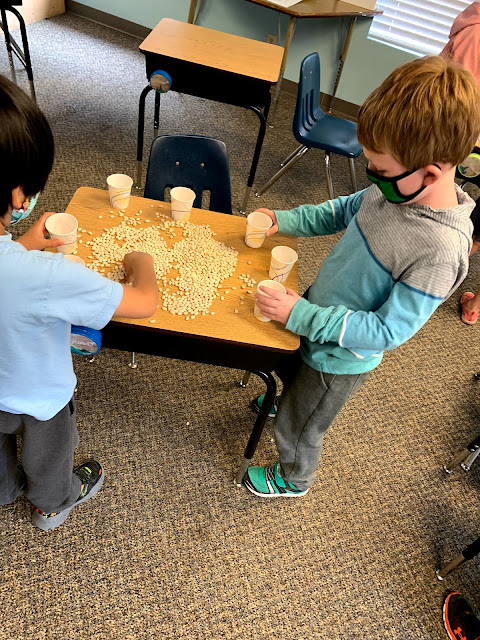In today's global economy, centered on the development and exchange of knowledge and information, successful people are fluent in several disciplines and comfortable moving among them. Creativity, adaptability, critical thinking and collaboration are highly sought after skills. Integrated studies helps to develop those skills in the classroom.
Integrated Studies allows students to develop a meaningful understanding of the complex associations and influences within a topic.
The second graders are immersed in an integrated studies unit on the Middle Ages.
We used a backdrop of The Middle Ages to create our classroom Code of Chivalry. We practiced our cursive handwriting skills by signing the code with a real quill pen and ink.
We continued our exploration of knighthood by reading a variety of books centered around knights. We researched coat of arms and each student created their own heraldic achievement, which consists of a shield, supporters, a crest, and a motto.

When the project was complete we had an accolade, which is a ceremony to confer knighthood.
One of our classmates extended the lesson, by bringing her family's coat of arms from home to share with the class.
We learned about the Feudal System and then took part in a visual/kinesthetic experience, where each student was assigned a particular role in the system (Queen, noble, vassal or peasant). Each student began with 10 gold coins. Each peasant gave the vassals 6 coins for the protection of their crops. From each peasant's payment, the vassal kept one piece and gave 5 to his lord, the noble. From each vassal's payment of fidelity, or loyalty, the noble kept 2 pieces and gave three to the queen. In the end, the peasants had 4 coins; the vassals, 12; the nobles, 22; and the queen, a whopping 46. As you can imagine, the peasants were not happy! We had a great discussion on the fairness of this system.
We used our newfound knowledge to create a Feudal System pyramid with a partner.
STEAM (Science, Technology, Engineering, Arts, and Math) activities enrich student learning by providing learners with different ways to engage with concepts. The second graders worked on the Tall Tower challenge. They used paper tubes and 2 feet of masking tape to make the tallest free-standing tower that they could.
We extended our discussion of the Feudal System by reading the poem:
The Four Alls:
The peasant who worked for all
The knights who fought for all
The priests who prayed for all
The king who ruled all
Each student selected one of the "alls" and created a diorama to depict the life of that group.
Our exploration of the Middle Ages continues. Stay tuned for an upcoming blog showcasing the building of our Classroom Cardboard Castle!





















